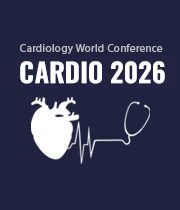Title : Heart transplantation - A beacon of hope for patients with end stage cardiomyopathy due to fabry disease: A systematic review
Abstract:
Introduction: Fabry disease (FD) is a rare X- linked disorder caused by the mutation in α-galactosidase A gene. End-stage cardiomyopathy is the leading cause of death among these patients. Heart transplant (HT) emerges as a viable therapeutic option when enzyme replacement therapy (ERT) proves to be insufficient or ineffective.
Method: Pubmed database was searched using keywords “Fabry disease” AND “cardiac transplantation” from 1970 to 2024. All relevant case reports were included.
Results: 5 relevant case reports (N=6) were included in this systematic review out of which all patients post-cardiac transplant for FD had good long term outcomes and quality of life. Verocai et. al. (N= 1) described a FD female who was still alive at 14 years post-HT with no evidence of recurrence in any of the endomyocardial biopsies (EMB). Tran Ba et. al. (N=2) described two brothers who underwent combined heart and kidney transplant at respectively 49 and 42 years of age. Both showed no recurrence of disease at respectively 4 and 9 years after transplantation. Rajagopalan et. al. (N=1) described a 62 Y.O M who underwent heart and renal transplantation for advanced cardiomyopathy and nephropathy secondary to FD. At 6 months, he reported dyspnea on exertion and a diagnosis of constrictive pericarditis was made with biopsies showing no evidence of disease recurrence. Symptoms resolved completely after pericardiectomy and he did well for several years post-transplantation. Karras et. al (N=1) described a 40 Y.O M who had worsening LV mass despite 12 months of ERT. He underwent combined heart and kidney transplant and had marked improvement in clinical status. At his 2 year evaluation, he showed no signs of deterioration. Cantor et. al (N=1) described a 53 Y.O F who did well after HT for end stage restrictive cardiomyopathy secondary to FD. Her EMB upto one year post-transplant did not show any inclusions suggestive of FD recurrence.
Conclusion: FD is an uncommon indication for heart transplantation. The cases described provide substantial evidence that HT can provide a new chance to these patients with extremely high cardiovascular mortality. More research is required to study the long term success of HT in end-stage cardiomyopathy FD population.



